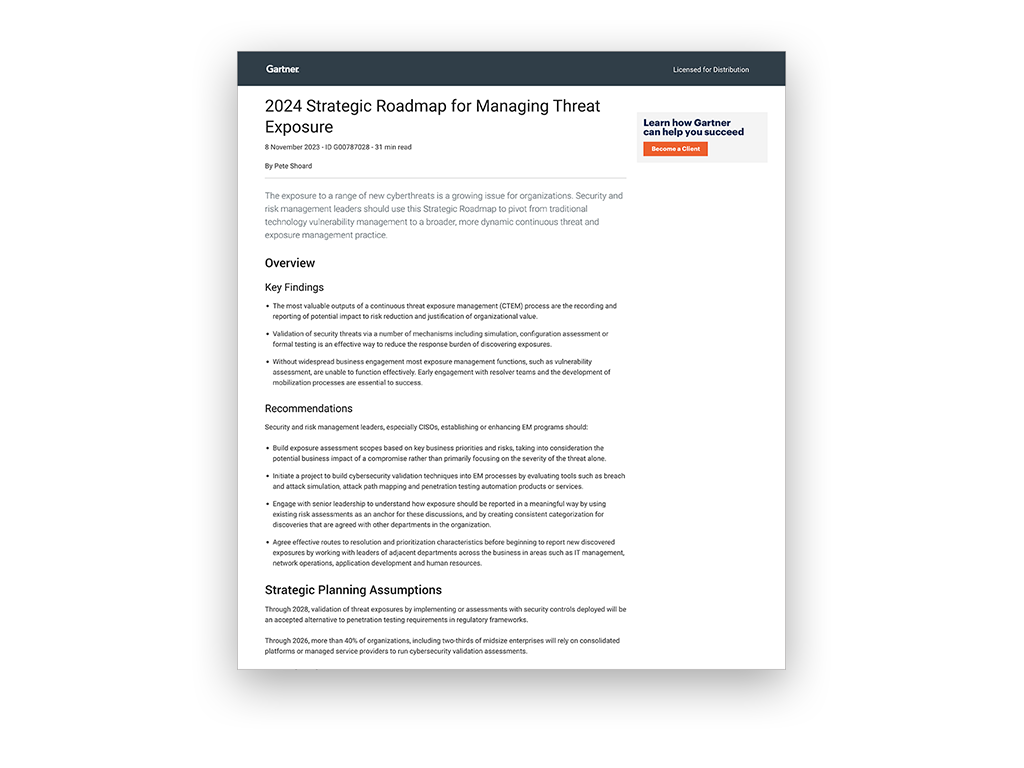Resources
2024 Gartner® Strategic Roadmap for Managing Threat Exposure
Effectively managing threat exposure requires continuous assessment of vulnerabilities, proactive measures, and strategic countermeasures. This guide offers security and risk leaders valuable insights, actionable plans, and best practices for developing strategic plans to tackle security issues.
